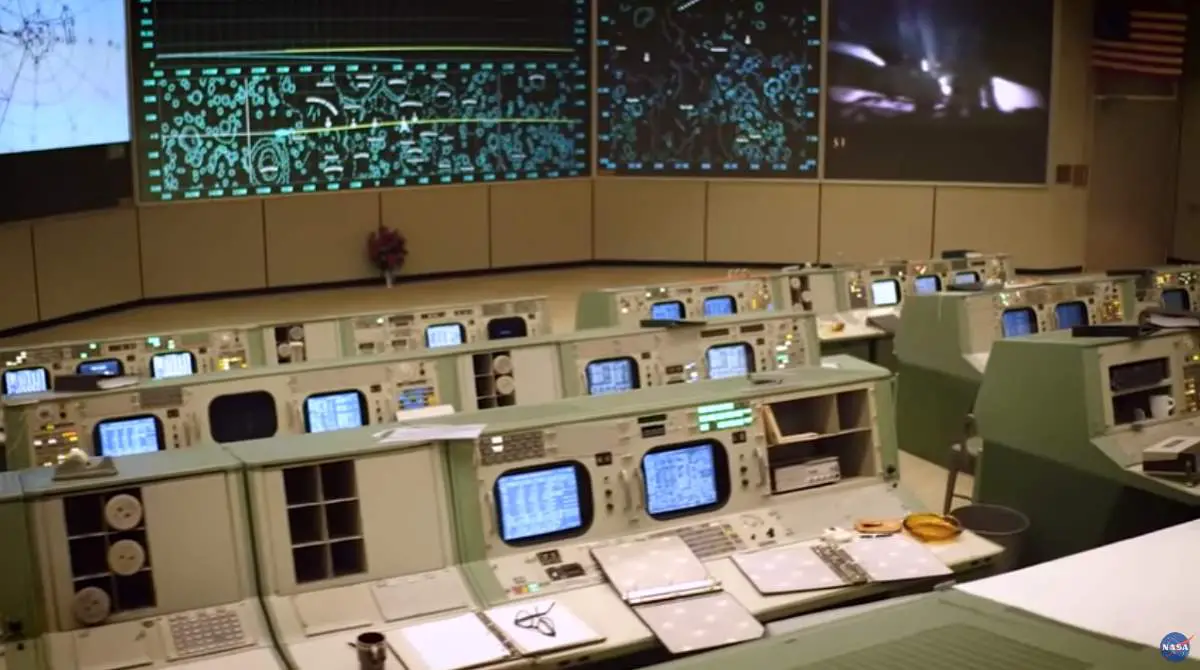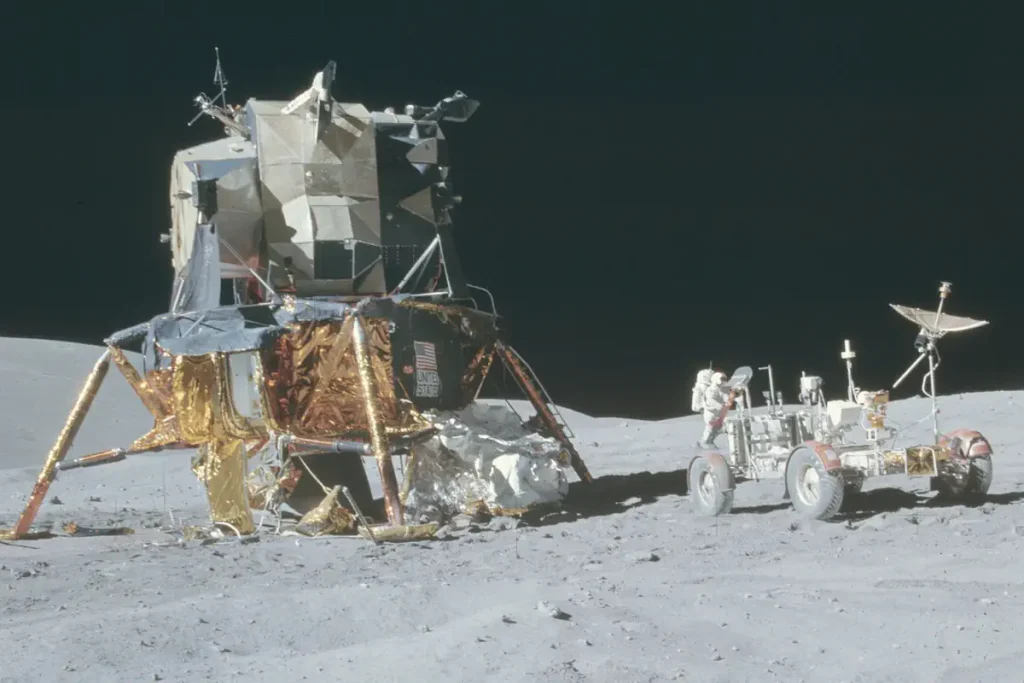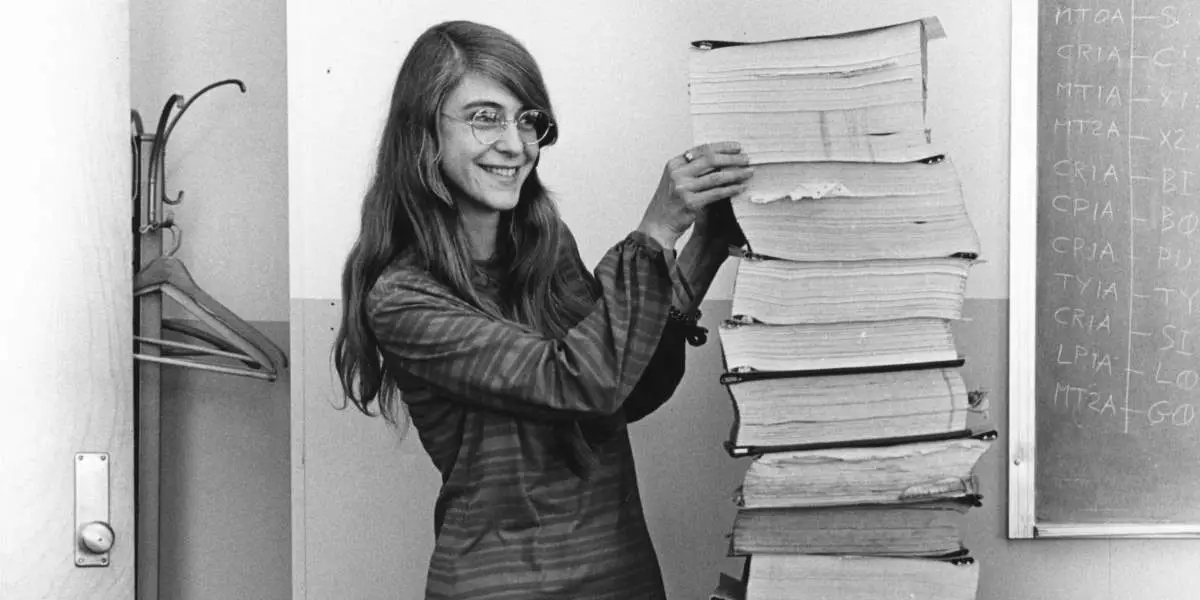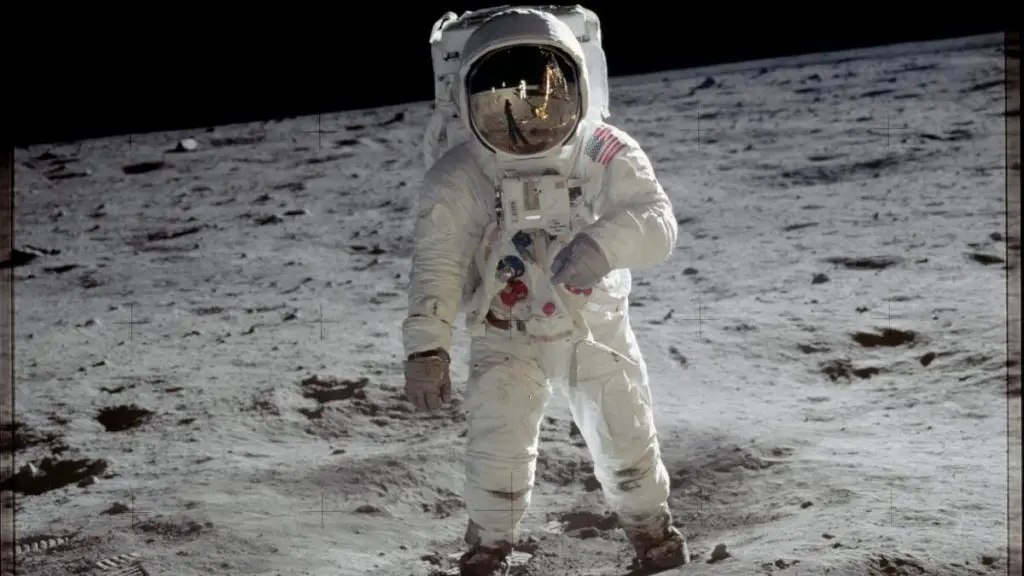The narrative surrounding NASA’s Apollo program often paints it as a high point that soon descended into unfulfilled potential. Critics point out the lack of moon bases, Mars landings, or a network of orbital outposts and label the program as more or less aimless following the landmark 1969 moon landing. However, to see Apollo only through this lens is to overlook its most enduring achievement: the ushering in of the digital age.
Often, chronicles of Silicon Valley’s rise gloss over NASA’s role, treating the space program and the digital revolution as parallel but separate narratives. This overlooks the fact that NASA’s Apollo program provided a critical impetus to the nascent field of digital technology in two significant ways.
The Dawn of the Microchip Era and Digital Age: NASA’s Groundbreaking Use of Computer Chips
Firstly, NASA was a pioneering user of integrated circuits, the first computer chips, instrumental in the functioning of the Apollo command and lunar modules. In the early 1960s, these chips were barely three years old, and apart from the U.S. Air Force, NASA was the first significant patron. This was a risky move at a time when even giants like IBM opted out of utilizing them.
NASA’s demand for these chips, coupled with its uncompromising standards for their manufacture, not only helped establish a global market but also drove a drastic price reduction of almost 90 percent over five years.
In a groundbreaking move, NASA was the first to entrust human lives to computer chips. If these tiny circuits could be trusted to navigate astronauts to the moon and back safely, it seemed logical to use them in terrestrial applications, from running chemical plants to analyzing advertising data. In effect, NASA’s faith in these chips paved the way for their widespread adoption.
Real-Time Computing
Furthermore, the space program introduced Americans and the wider world to the power and potential of technology. As millions watched Mission Control staff use computers to guide spacecraft to the moon, they gained a firsthand understanding of technology’s transformative capacity.
One of NASA’s significant contributions was the introduction of “real-time computing”. This concept may seem commonplace to the modern computer user, but in 1961, it was revolutionary. Before this, computations involved submitting programs on stacks of punch cards and waiting hours, if not days, for the results.
In contrast, the Apollo spacecraft, hurtling towards the moon at 24,000 miles per hour, demanded instantaneous calculations. With this requirement, real-time computing was born, implemented on machines that took up a single cubic foot, a remarkable accomplishment in an era when batch-processing machines filled vast rooms.
Thus, the Apollo program, far from being a glorious relic of an aimless space program, holds its legacy in every microchip and real-time computation that powers our digital age. It is a testament to the tremendous strides made by NASA, the milestones of which continue to shape our modern technological landscape.
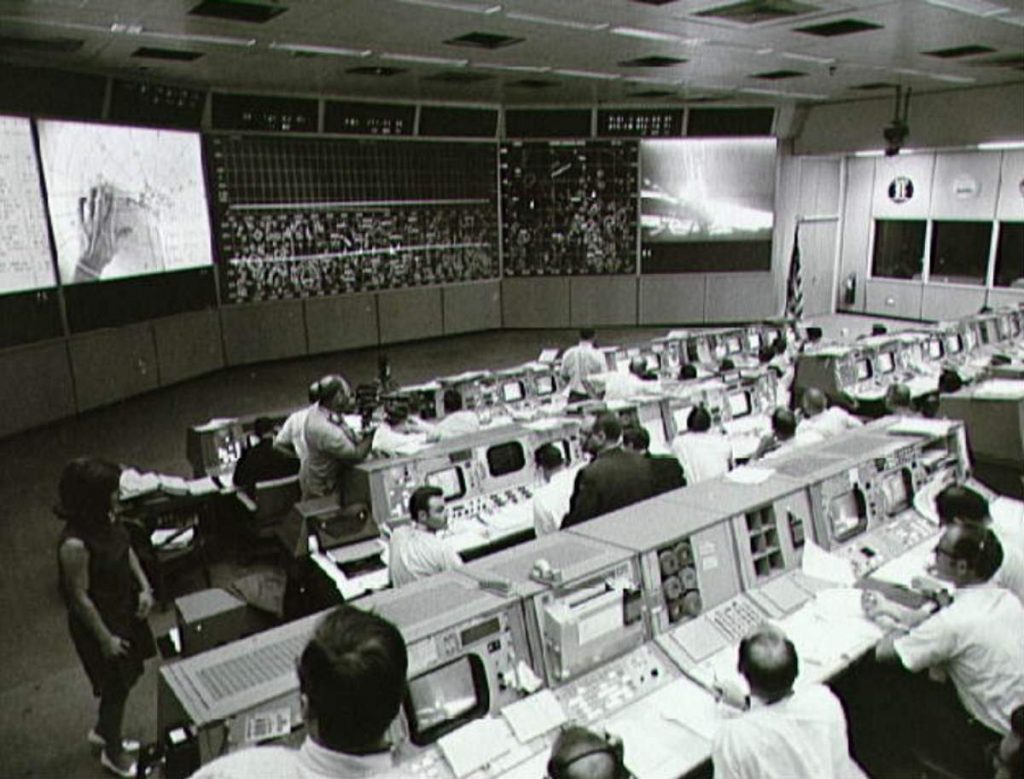
User-friendly computer interface
Another critical revolution set in motion by the Apollo program was the transformation of how individuals, with no intent or expertise in computer science (in this case, astronauts), interacted with computers. This was exemplified through the introduction of the Apollo Guidance Computer’s (AGC) interface, a compact display and keyboard unit known as the Display and Keyboard (DSKY).
The astronauts communicated with the AGC using the DSKY by entering concise numeric codes that corresponded to specific programs they wished to initiate. The DSKY, in turn, responded through five lines of numeric displays and a small panel of sixteen labeled lights. This rudimentary but effective system served as a critical channel of communication between humans and machines.
The DSKY fundamentally revolutionized the dynamic between humans and computers. In our present era, characterized by touch-sensitive screens, graphical user interfaces, and voice commands, we effortlessly interact with computers without needing a deep understanding of their intricate mechanisms. But let us travel back to the early 1960s; this level of accessibility and user-friendly interaction with computers was a groundbreaking concept.

In those times, computers were predominantly the realm of specialists; they were complex, intimidating machines that required specialized knowledge to operate. However, the advent of the DSKY was transformative. It democratized computer access, creating an interface that enabled even non-specialists to interact with and command the machine. This shift was not just radical; it laid the foundation for the user-centered design philosophies that are at the heart of the digital interfaces we interact with today. The DSKY and the Apollo program, more broadly, played a pioneering role in shaping this user-centric digital landscape.
The first software engineer: Margaret Hamilton

Margaret Hamilton, an unsung hero of the Apollo missions, played an instrumental role in this shift to the digital age. Born in 1936, Hamilton earned a degree in mathematics with a minor in philosophy from Earlham College. Following her graduation, she worked as a high school teacher, a stint at an insurance firm, and as a systems programmer at MIT. However, her true calling beckoned when she joined the Semi-Automatic Ground Environment (SAGE) project at the Lincoln Laboratory, working on the nation’s first air defense system. It was this role that introduced Hamilton to the world of software engineering, a discipline she would come to define in many ways.
When the Apollo program was launched, Hamilton became the Director of the Software Engineering Division at the MIT Instrumentation Laboratory, which developed onboard flight software for the Apollo missions. She led a team of programmers in developing the code for the Apollo Guidance Computer. This computer was a pivotal part of the Apollo missions, controlling the spacecraft’s command module and the lunar module. Not only did Hamilton contribute to the coding process, but she also developed rigorous testing and verification procedures, which would later become standard practice in software development.
Margaret Hamilton’s influence extends beyond the realm of the Apollo missions. Hamilton coined the term “software engineering” itself. She advocated for the recognition of software engineering as a legitimate discipline at a time when the term was not widely recognized or respected. Her efforts laid the groundwork for software engineering to be acknowledged as a vital field in its own right. Her pioneering work in system design and software development has had a profound impact on modern computing. Hamilton’s work is a testament to the integral role women played in the space race and the digital revolution, a narrative often overlooked.
Shaping the Future: NASA’s Pioneering Role in Digital Photography
As we trace the lineage of the digital revolution, we encounter another remarkable contribution by NASA that revolutionized the way we capture and store memories today – the advent of the digital camera. While the physical manifestation of the first digital camera was developed by Eastman Kodak in 1975, the seeds for its conceptual birth were sown within the hallowed corridors of NASA in the 1960s.
Eugene F. Lally, a NASA engineer, a photography enthusiast since his teens, and the mind behind a popular solution to reduce red eye in photography, proposed the concept that would eventually materialize as the digital camera. Lally envisaged a mosaic array of optical sensors that could sense, digitize, and transform light signals into electronic images. This electronic image could then be fed into a computer that could track celestial bodies in real-time during missions. This was analogous to sailors navigating by the stars using a sextant in bygone days.
The phrase “Digital Photography” was coined by Lally while working at the Jet Propulsion Laboratory (JPL). Interestingly, another NASA engineer at JPL, Frederic Billingsley, introduced the term ‘pixel’, short for picture element, in 1965.
Building on Lally’s research, the first digital cameras were built using solid-state based sensors, primarily Metal Oxide Semiconductor (MOS) capacitors, which converted photons into an electrical charge. The charges were stored and released in a manner that allowed the construction of images, much like film cameras. By the 1970s, Charge-Coupled Devices (CCDs) had become the standard for electronic cameras.
Despite these advancements, CCDs remained analog devices. The requirement of additional circuitry for converting the charge to digital information made them power-intensive and susceptible to radiation, especially in space. This marked a crucial turning point in the quest for more compact, lightweight, and energy-efficient cameras for long-term space missions.

In the 1990s, a NASA JPL team led by Eric Fossum picked up the baton and focused on the Active Pixel Sensor technology initially developed by Olympus in Japan. This technology significantly reduced the power consumption, shrinking it to less than 1/100th of that of a CCD sensor, without compromising the image quality.
NASA’s use of complementary metal-oxide-semiconductor (CMOS) rather than the PMOS used by Olympus led to cheaper and more efficient image sensors. They also built additional functionalities directly onto the chip, enabling a radical reduction in the size of the cameras and power consumption. These CMOS cameras could also be radiation-hardened for use in deep space.
Recognizing the potential of this technology beyond spacecraft, Fossum, along with three other JPL engineers, founded Photobit to commercialize their discoveries. Their technology, which was licensed exclusively from JPL, paved the way for the first megapixel sensors capable of over 500 frames per second. The advancements were soon adopted in the film industry, medical imaging, weapons imaging, and more, leading to the creation of consumer digital cameras, webcams, and mobile phones.
Thus, what began as NASA’s quest for better cameras for space exploration laid the groundwork for the digital cameras we take for granted today. This once again highlights how NASA’s innovative research and development often spirals out into products that have profound impacts on our everyday lives.
Sources
- “What You Didn’t Know About the Apollo 11 Mission” on the Smithsonian Magazine website
- “Apollo Technology: Back to the Future” on the NASA website
- Margaret Hamilton on Wikipedia
- “Moon-landing innovations: 12 items we wouldn’t have without space travel” on the CEO Magazine website
- “5 Moon-landing Innovations that changed life on Earth” on The Conversation website
- Moon Landings: All-Time List [1966-2025] - February 2, 2025
- What Is Max-Q and Why Is It Important During Rocket Launches? - January 16, 2025
- Top 10 Tallest Rockets Ever Launched [2025 Update] - January 16, 2025
